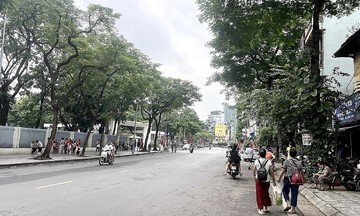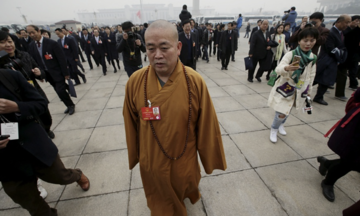 |
At 9 a.m. in Kieu Ky village, the rhythmic clang of hammers fills the air. Inside the workshop, 27-year-old Ninh (wearing black and glasses) and three artisans begin their workday. One hammers gold, another sands a wooden surface, preparing to apply gold leaf to a large horizontal lacquered board.
“Outsiders hearing the hammering often think someone is pounding meat. Only locals recognize the sound of goldbeating," Ninh said.
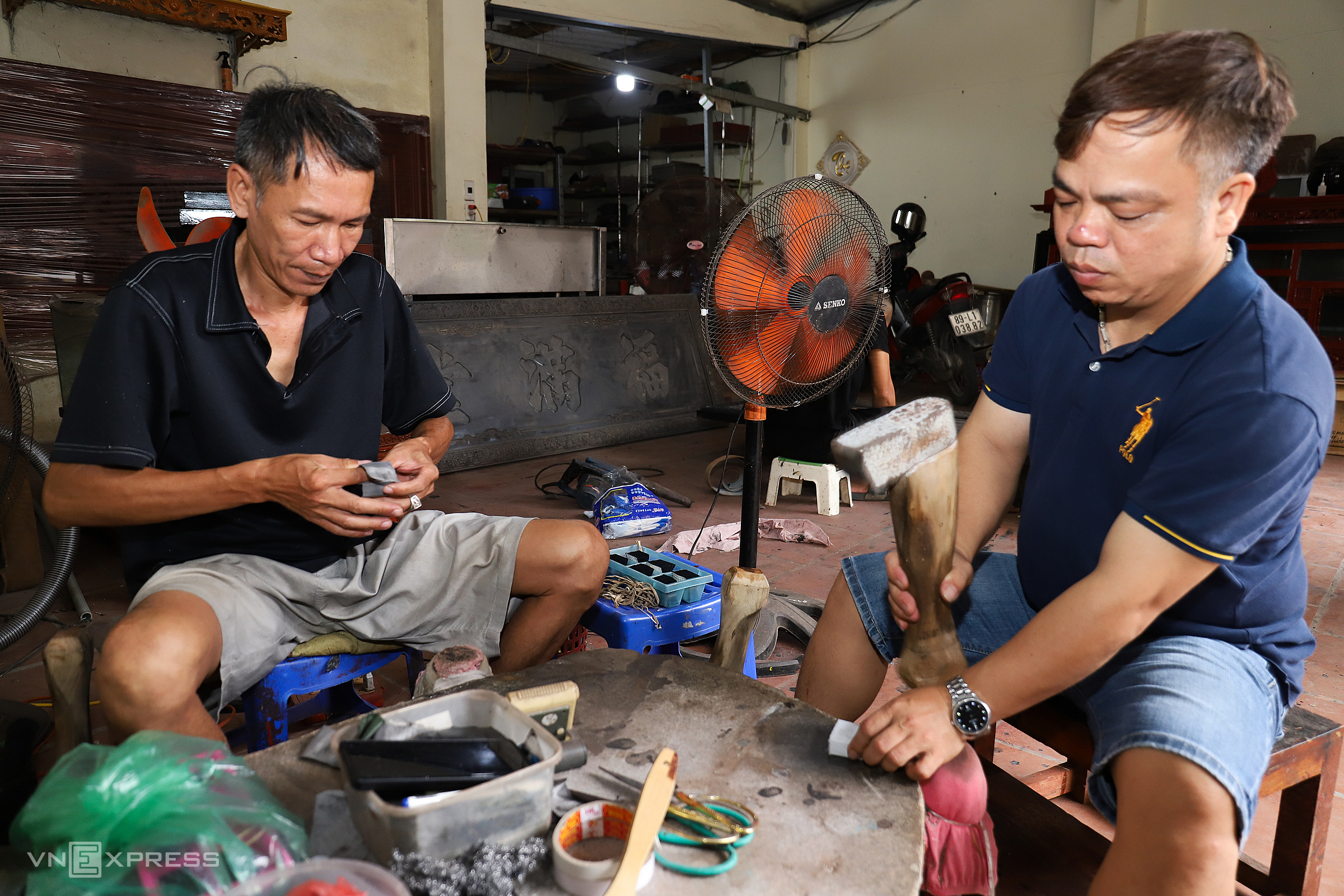 |
Gold and silver leafing in Kieu Ky dates back over 300 years. It is believed to have been introduced from China by Nguyen Quy Tri, a scholar who earned a doctoral degree during the Later Le dynasty, after a diplomatic mission.
In 3/2021, this craft was recognized as a National Intangible Cultural Heritage.
Ninh's family has practiced the craft since the late 19th century. Village elders recall the gold leaf trade's peak in the 1990s, with nearly 100 households involved. Now, only a few dozen households remain, Ninh's family among the oldest.
Ninh grew up surrounded by the sounds of chisels and hammers. He began learning lacquer work at 15, mastering the skill by 23, when his father formally passed on the goldbeating tradition.
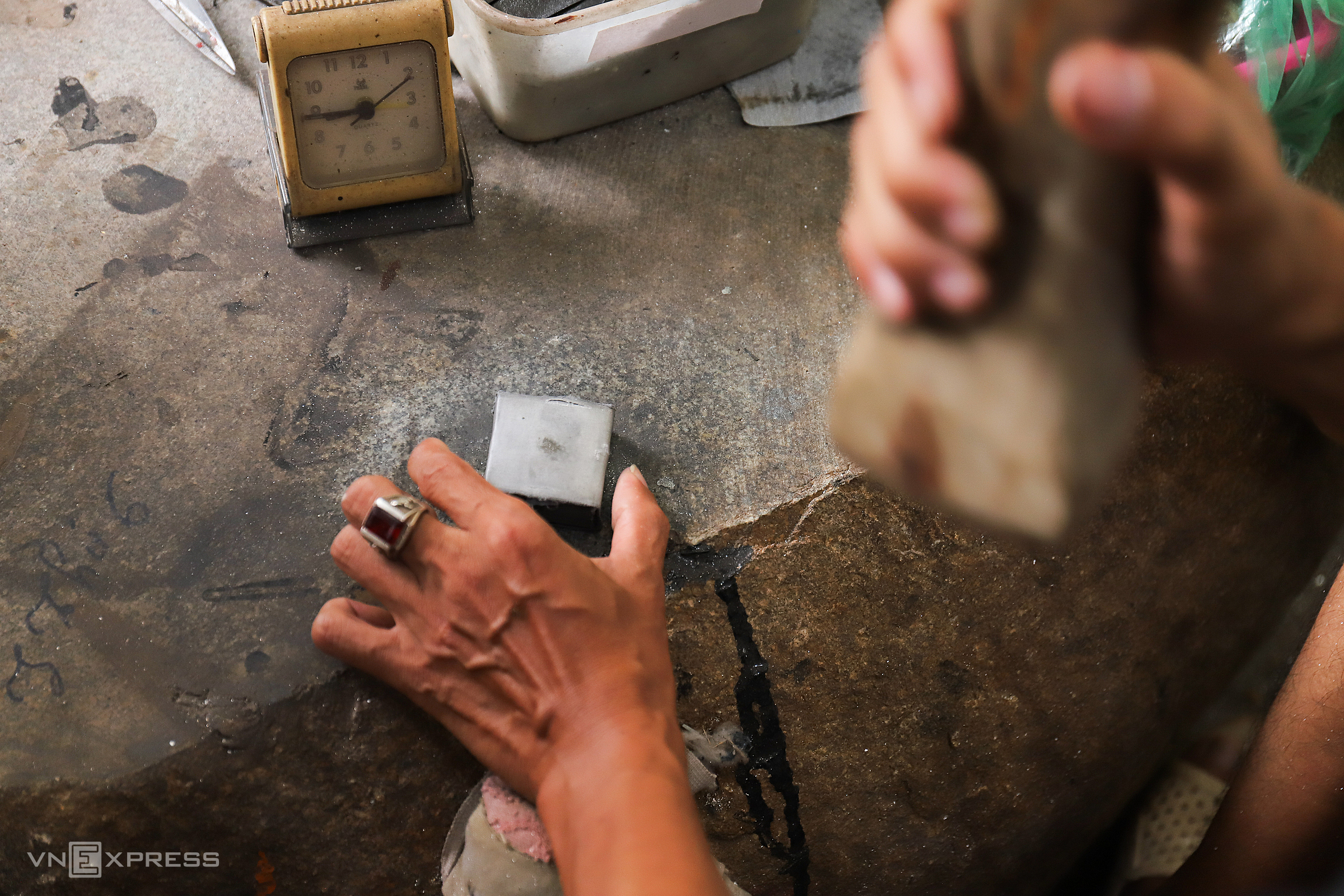 |
Traditionally, creating gold leaf involved about 40 steps. Today, machinery assists with some stages, but the crucial goldbeating process remains manual to ensure quality.
First, 9999 gold bars are rolled thin and cut into 1 cm squares. "The gold must be pure to be malleable enough to be hammered into thin leaves," Ninh explained.
These small gold pieces, called "diep," are layered between sheets of quy paper and hammered continuously for about 30 minutes (timed), roughly 10,000 strikes. A 1 cm² gold piece can be hammered into a 4 cm² leaf.
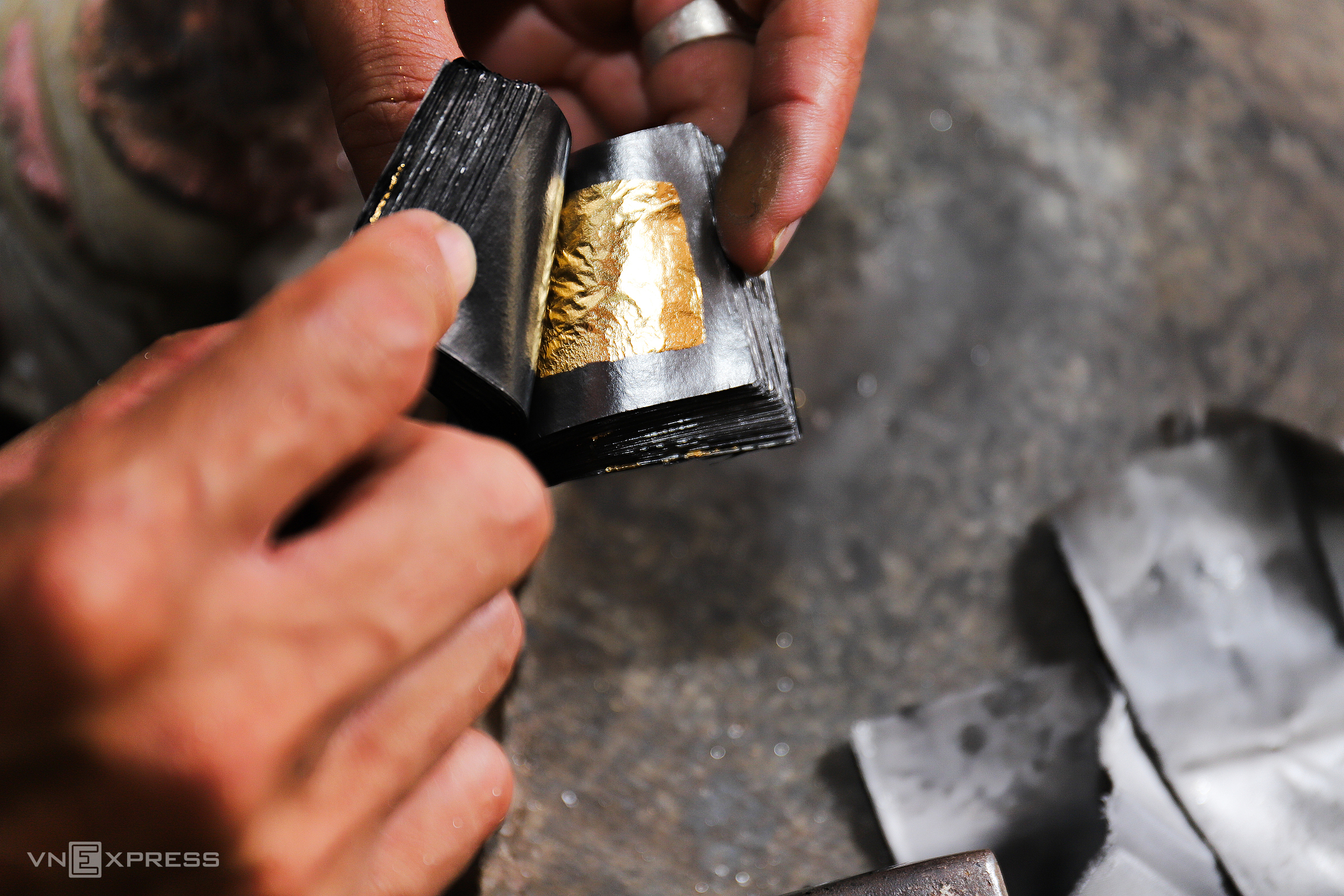 |
The resulting gold leaf, known as "quy," is then carefully extracted from the layers of thin, durable Do paper, the same type used for Dong Ho paintings. This paper is treated with a homemade ink from soot and buffalo skin glue for added strength. A skilled artisan can hammer half a "chi" of gold into 500 leaves.
Ninh says hammering the "diep" is the most strenuous step. "It demands intense focus. A moment's lapse, and the hammer could strike your hand," he said.
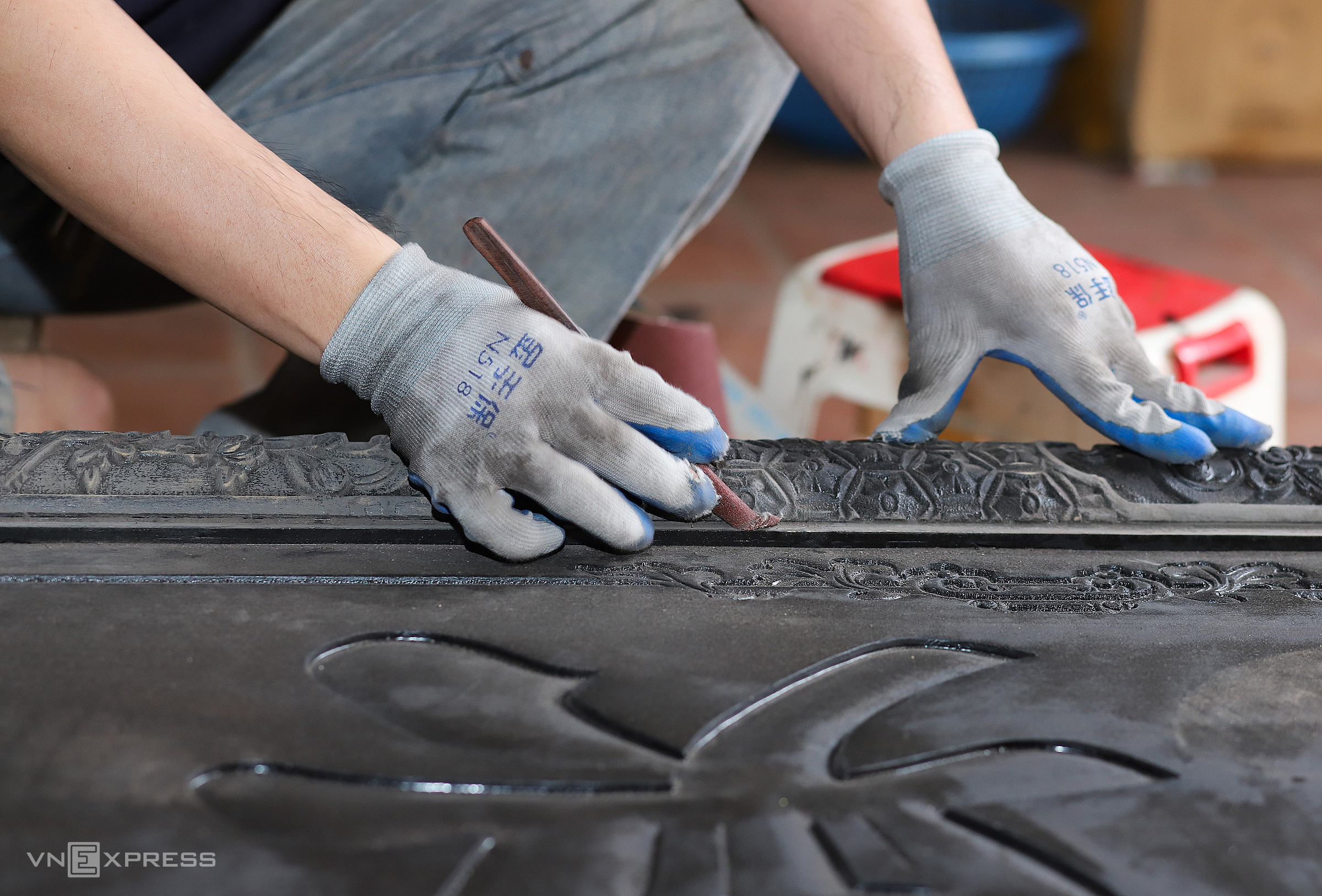 |
To prepare for gilding, the artisan sands the wood about 12 times, then applies a special lacquer to the undercoat and lets it dry.
 |
The gold leaf (quy) is used to gild Buddha statues, altar sets, vases, and other objects.
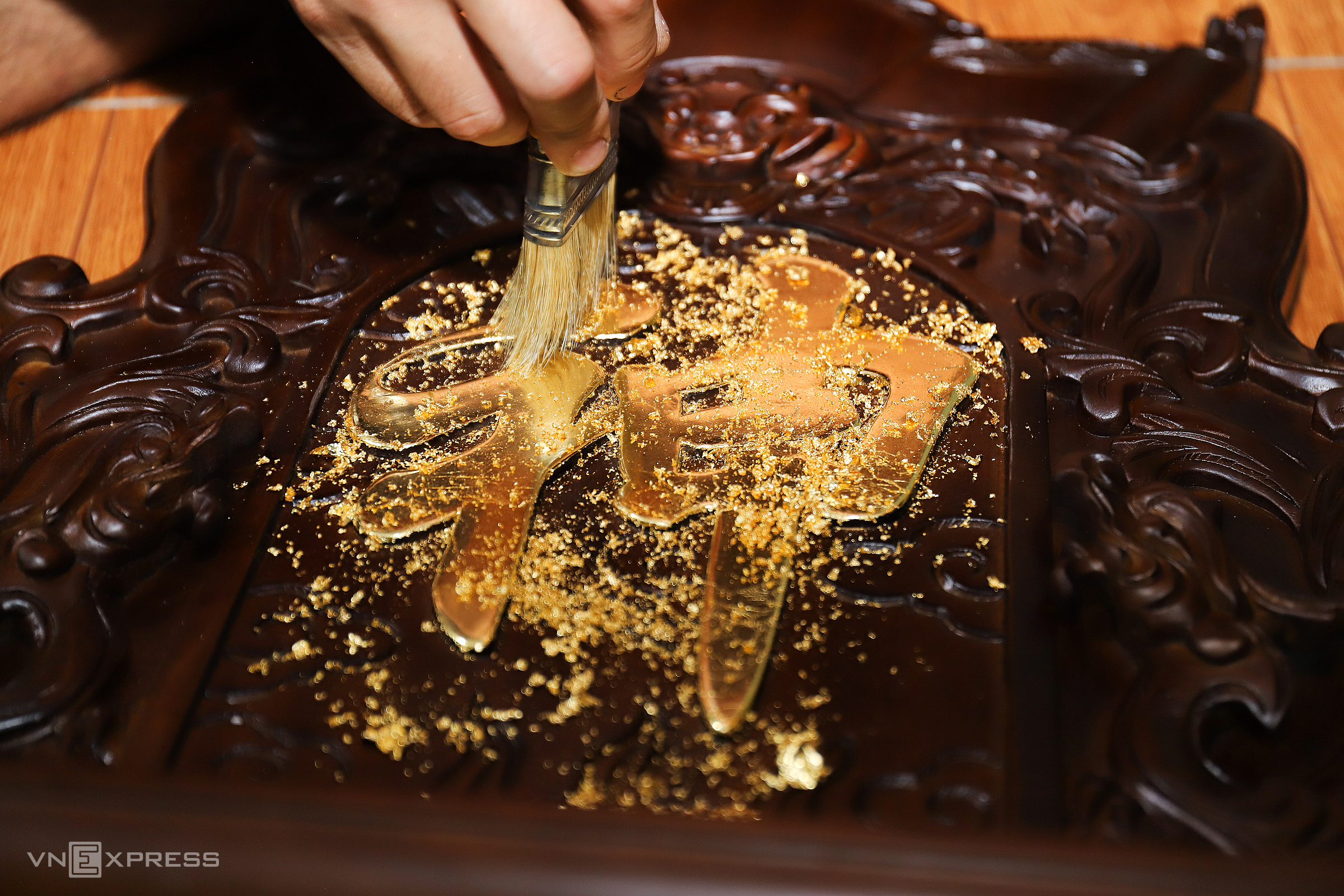 |
After burnishing to ensure adhesion and shine, any gold dust is meticulously collected for reuse. These steps occur in a closed room, shielded from drafts. The delicate leaves, so thin a breath could dislodge or shatter them, require a controlled environment.
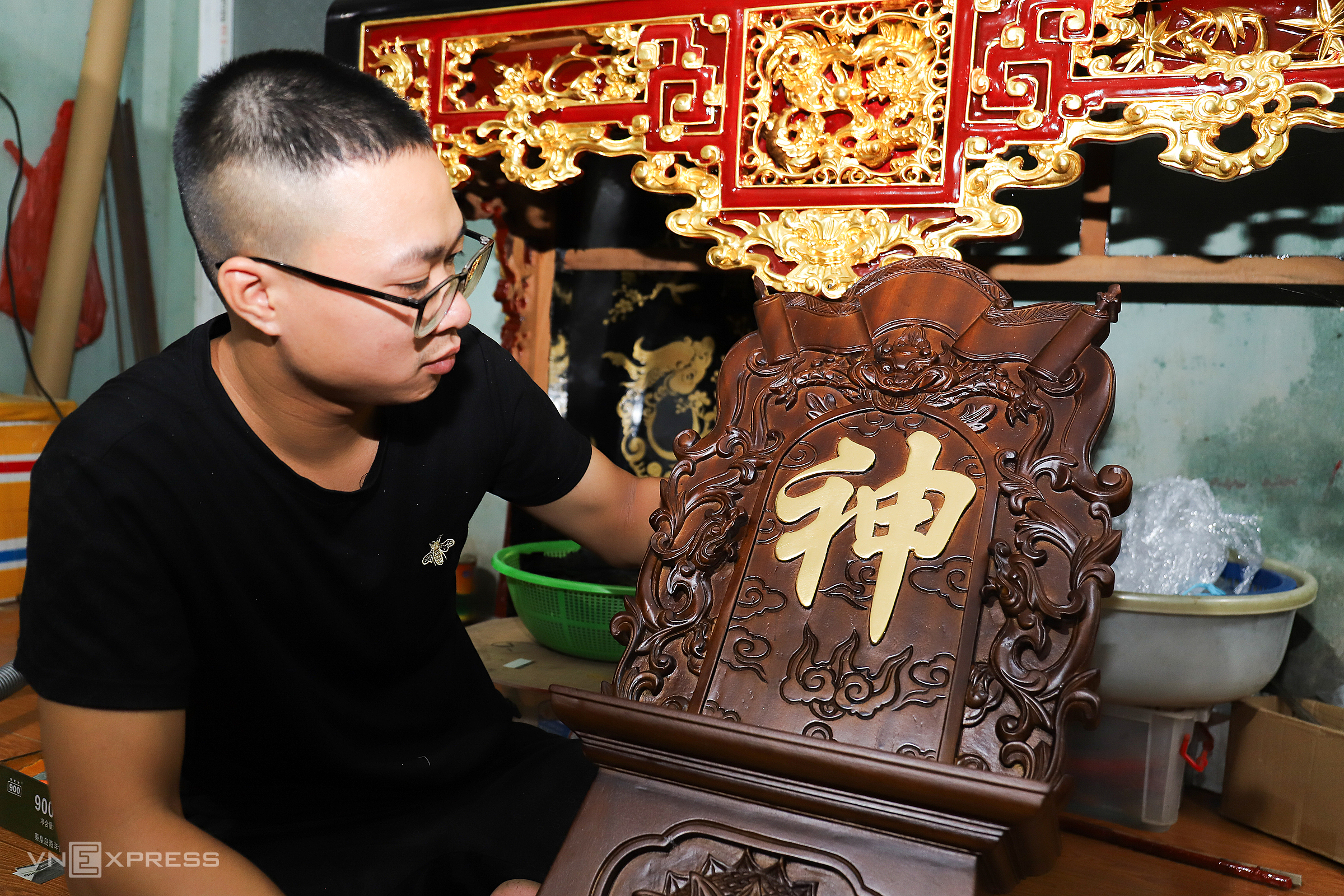 |
Depending on size, a piece might require from a few "phan" to a "luong" of gold. Gilded items range from a few million dong to significantly higher prices for large projects.
"My father and I once gilded a ceremonial door, using 2-3 "luong" of gold," Ninh recounted.
While gold leaf traditionally adorned horizontal lacquered boards, parallel sentences, Buddha statues, and ritual objects, younger artisans like Ninh are applying it to modern interior design.
Ninh's family workshop receives orders nationwide and internationally.
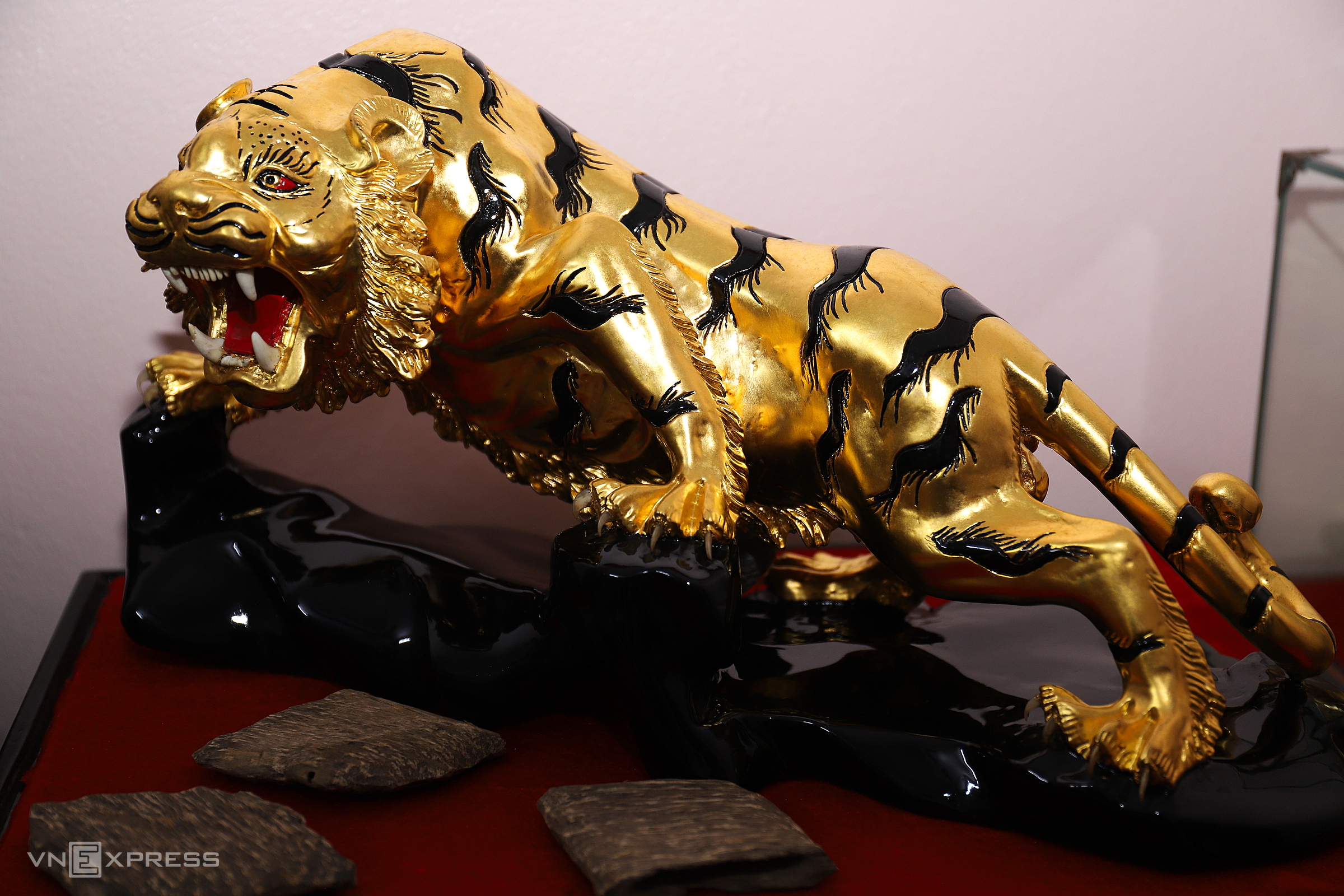 |
This tiger statue required two "chi" of gold to gild.
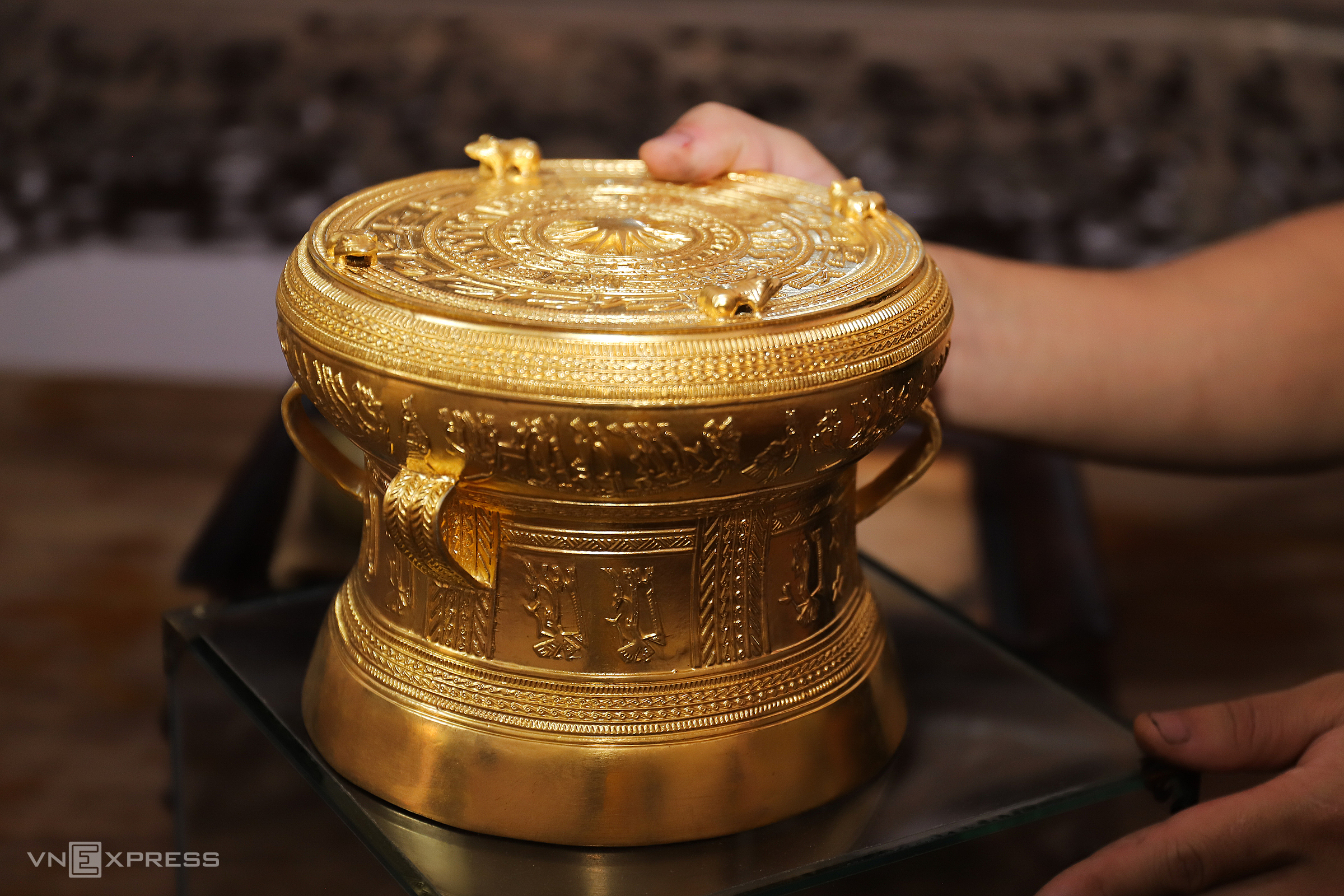 |
An intricately gilded Dong Son bronze drum.
 |
A wooden plate with gold leaf detailing.
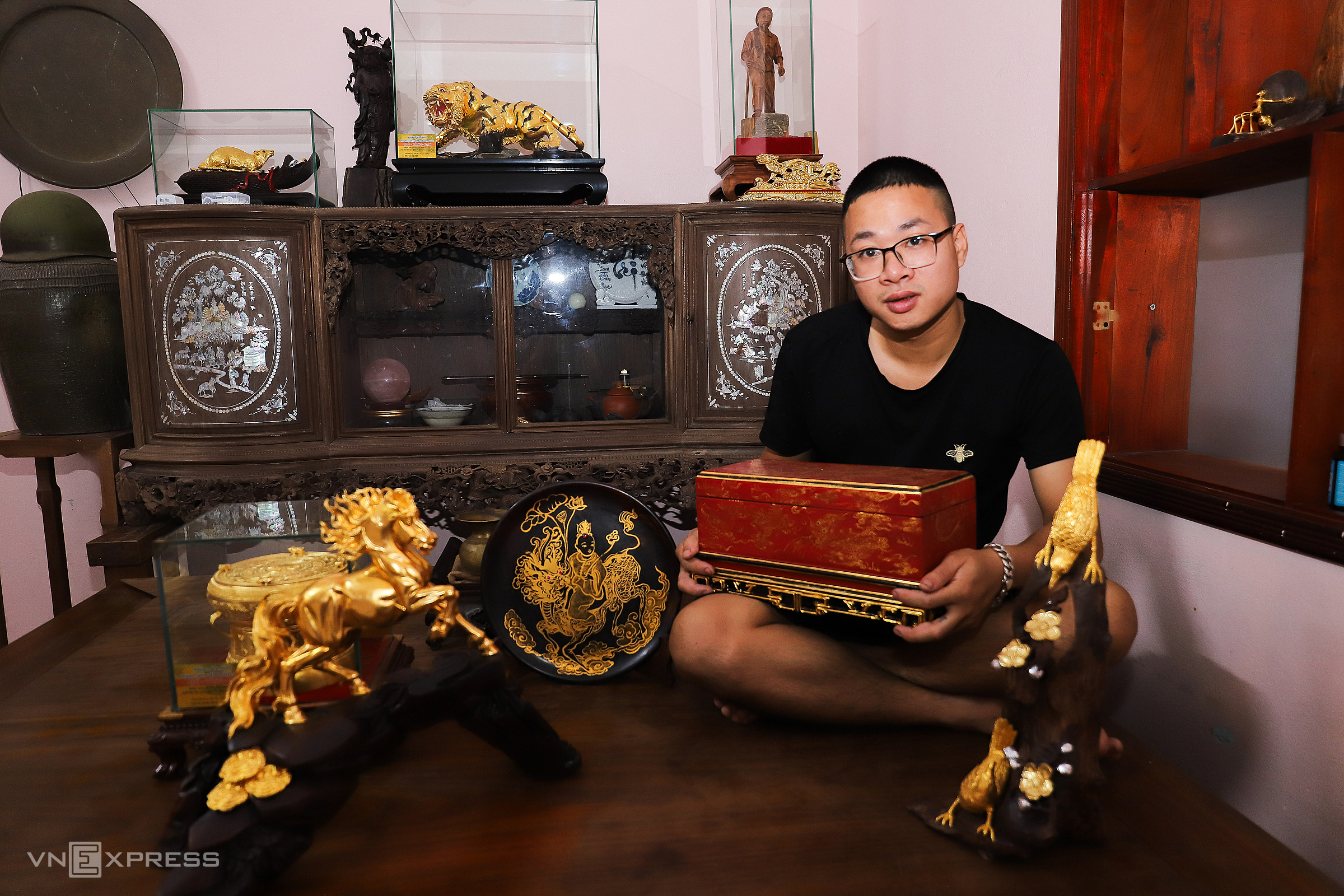 |
However, the craft faces challenges. Recent months have seen rising domestic gold prices and competition from imitation gold products from China, causing a 50% drop in orders. The workforce has shrunk from 20 to 5.
"The trade has its ups and downs, but as long as we remain dedicated, we can preserve the essence of our village craft and ensure Kieu Ky gold leaf continues to thrive," Ninh stated.
Nga Thanh - Quynh Nguyen



